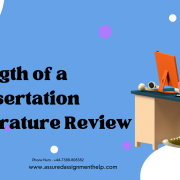Written-Response Assignment – Sources
Source I
“We in Britain cannot opt out of the world…We look to our alliance with America and NATO as the main guarantee of our own security and liberty…it is more vital than ever that each and every one of us within NATO should contribute [their] proper share to the defense of freedom…”
– Margaret Thatcher in a foreign policy speech titled “Britain Awake” (1976)
*NATO: North Atlantic Treaty Organization
Source III
“No region/nation will truly be free of the pandemic until all nations are free of it. Until an international consensus has been reached and a coordinated operational strategy has been adopted, the virus will find new vulnerable populations and continue to spread. It will neither respect international boundaries, nor be limited/eradicated by
sporadic vaccination coverage across populations and countries. It will continue to replicate and mutate to new, unpredictable forms, which potentially limit the effectiveness of current and future vaccines, and further threaten global health security and economic prosperity. Consequently, there will persist a need for restrictions on international travel, variably and inadequately implemented by individual countries.”
Brian L.H. Wong, Manfred S. Green, John Reid, Jose M. Martin-Moreno, Nadav Davidovitch, Laurent Chambaud, Lore Leighton, Mohamud Sheek-Hussein, Ranjeet Dhonkal, Robert Otok, John D. Middleton from Toward
‘Vaccine Internationalism’: The Need for an Equitable and Coordinated Global Vaccination Approach to Effectively Combat COVID-19 from the International Journal of Public Health
ASSIGNMENT I: Source Interpretation
Examine all three sources and complete the following assignment.
Examine each source.
Write a paragraph response which answers the question: How do the selected sources relate to the topic of nationalism?
• interpret each source to demonstrate your understanding of how each source links to nationalism
• explain one or more of the relationships that exist among all three sources
Tips/Guidelines for Analyzing Sources
1. What does the source mean?
a. Who or what is shown in the source?
b. Key words or images?
2. What is the perspective of the source?
a. What is the MESSAGE of the SOURCE?
b. Is it positive? Is it Negative?
c. What is the TONE of the SOURCE? Cynical? Sarcastic? How do you know what the tone is?
3. Who/What groups would support the perspective?
a. Why would they support it?
4. Who/what groups would criticize the perspective?
a. Why would they criticize it?
5. Link the perspective being show to a DIMENSION/THEME of
NATIONALISM
a. Nationalism
b. Supranationalism
c. Internationalism
d. Ultranationalism
e. Nation
f. Nation-state
g. National Interest
6. WHAT motivation would the author/cartoonist have for SHOWING you this perspective?
Tips/Guidelines for Writing
– Each paragraph has a single focus and single central idea it is trying to explore/communicate. This is typically indicated by a topic sentence at the beginning of the paragraph, which clearly states the central idea of the following paragraph.
– For each source you should explain clearly what the source is attempting to communicate about nationalism using specific evidence and details from the source and what you have learned in the unit. In Social Studies, you will not only be asked to explain what you think, but to provide clear evidence for why you have come to the conclusions you have. A good guideline is to write one full paragraph of analysis per source.
– Identify how the sources are related; what ideas are they discussing which they share in common?
– Go further than the general topic and summarizing the sources; all sources will deal with internationalism and global issues. You need to be more specific in examining the relationships between the sources.
– Avoid the use of “I” statements in formal writing: simply state your position.
– Carefully proofread your work for grammatical errors, and practice reading your work out loud to catch instances of awkward wording and sentence structure.
– Your work will be assessed using the Content, Dimensions of thinking and Communication Rubrics.











